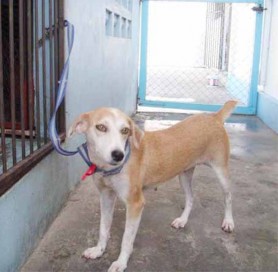Stomatitis (sore mouth)
Pet Corner

Continued
Two weeks ago, we dealt with the symptoms and treatment of the classical stomatitis (‘sore mouth’) condition. There are, however, some variations of the ailment. The following variations are based on documentations by scientists Dr DG Carlson (Veterinarian) and Dr JM Griffin (Medico).
Trench mouth (Vincent’s stomatitis)

This is extremely painful stomatitis caused by a bacteria-like germ. It is most common form of stomatitis in the dog. It is characterized by a beefy red look to the gums, which bleed easily when touched. There is a characteristic offensive odour from the mouth, usually accompanied by the escape of a brown, purulent, slimy saliva which stains the teeth, muzzle. The front legs, which the dog uses to rub its inflamed mouth, also get stained.
Treatment
Flush the mouth with a weak solution of peroxide (one part in 10) several times a day and administer a course of penicillin for at least one week (often, a 3-week long treatment course is necessary). Asprin should be given to control the pain. All antibiotics should be used only under veterinary supervision.
Yeast stomatitis (thrush)
This is a specific kind of stomatitis usually seen in young dogs after long-term treatment with a broad spectrum antibiotic. You will note that the mucus membranes are covered with soft white patches which coalesce to form a whitish film on the gums and tongue. Painful ulcers are seen as the disease progresses. This antibiotic inhibits bacterial growth and fungi tend to proliferate.
Treatment
Nystatin is the drug of choice. Cortisone is used to reduce the inflammation. Feed a soft diet. Large doses of a B-Complex vitamin also are recommended.
Recurrent stomatitis
In this condition, ulcers develop in the mouth when jagged, broken or diseased teeth may rub repeatedly against the mucus membrane lining of the lips, cheeks or gums. Excessive build-up of tartar in the teeth is a predisposing cause. Bacteria and fungi quite commonly are associated with these ulcers.
Treatment
The teeth should be cleaned. Consider removing any tooth that is diseased. Put your dog on a good home care oral hygiene programme (we’ll discuss this later). Persistent cases may require antibiotic treatment supervised by a veterinarian.
Gingivitis (sore gums)
The smart text books define gingivitis as an acute (suddenly beginning) or chronic (over a long period) inflammatory process of the gums which is characterized by swelling and redness.
Right at the outset, let me tell you this is not an easy ailment to cure. When I was a young vet practising in Europe, lots of dogs (mainly Poodles, not Puddles as I have heard many say) and cats came into the clinic for treatment of this malady.
The text books and experienced professors and senior assistants all had good advice to give, but in the end, it was the devil’s own job not only to effect a cure, but to keep the disease from recurring. I remember one case that defied the traditional treatments; but, the moment the owner (who was a ‘lady of the night’ and who had frequent visitors to her apartment), changed her life style for a more permanent association within wedlock, the disease evaporated. The consensus at the time was that this particular gingivitis case had its origin in a psychological disturbance of the pet, brought on by the unsettled and unsettling habits of the owner.
More commonly, the causes of gingivitis are associated with primary diseases. Foremost among these would be tartar build-up (dental calculus). Tartar is a dark brown chemical deposit (a salt) on the teeth, especially the canines, the pre-molars and molars. In fact, one can argue that any condition that allows the gums to recede from the sides of the teeth would cause small pockets and crevices to develop. These, in turn, would trap particles of food and an assortment of bacteria. As a consequence of this bacterial invasion, root abscesses and a serious tooth decay could develop. Under such conditions, one is almost always confronted with a gingivitis.
The symptoms of gingivitis are pretty obvious. A foul smell emanates from the mouth; the gums become red and swollen. If you touch them they may bleed. The gums are painful to the touch. The edges of the gums depart from the teeth, producing a narrow band of bright red tissue surrounding the neck of the tooth. If left untreated, the gums become more swollen, and even ulcers may develop. Later, the swelling is enormous. Even then, I have experienced dogs not exhibiting great signs of discomfort. Only when a severe periodontitis (tooth decay) develops, will we witness an inappetence (cessation of eating).
Next week, we’ll discuss the treatment of Gingivitis and some other forms of this dreaded oral disease.
Please implement disease preventative measures (vaccinations, routine dewormings, monthly anti-heartworm medication, etc) and adopt-a-pet from the GSPCA’s Animal Clinic and Shelter at Robb Street and Orange Walk, if you have the wherewithal to care well for the animals. Do not stray your unwanted pets, take them to the GSPCA’s Clinic and Shelter instead. If you do not wish your pet to have puppies or kittens, you may exploit the GSPCA’s free spay and neutering programme. If you see anyone being cruel to an animal, or if you need any technical information, please get in touch with the Clinic and Shelter by calling 226-4237 226-4237.




